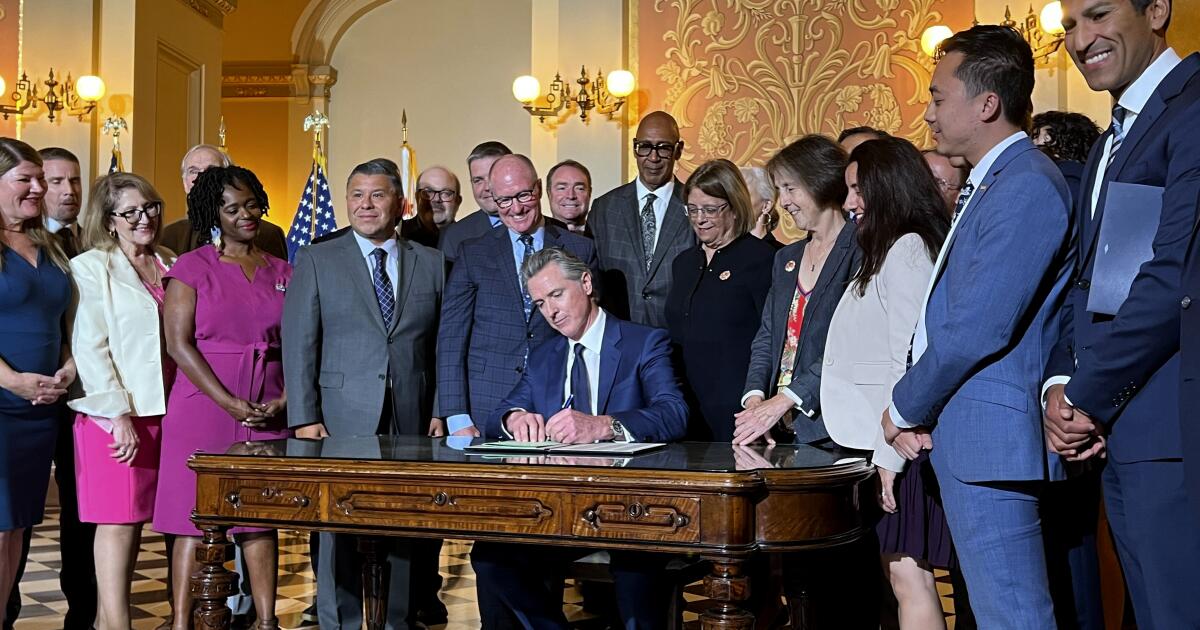Conservative Leader John Rustad speaks at a campaign rally in Surrey B.C., on Oct. 17. In the 2020 provincial election, the NDP won seven of the nine Surrey seats. But in Saturday’s election, at least seven of what are now 10 Surrey seats went for Rustad’s party.ETHAN CAIRNS/The Canadian Press
In this past Saturday’s British Columbia election, voters in the suburban Vancouver city of Surrey shifted their support massively from the NDP to the Conservatives. At the federal level, this will hearten Conservative Leader Pierre Poilievre, and dishearten Liberal Prime Minister Justin Trudeau and NDP Leader Jagmeet Singh.
For as suburban Greater Vancouver goes, so goes suburban Greater Toronto. And as they go, so goes the nation.
Surrey is a city of about 570,000 people in southern Metro Vancouver. About 38 per cent of the population is South Asian, up from 33 per cent in 2016. This reflects both the rapid growth of the city and a marked shift in Canadian immigration patterns.
China, India and the Philippines are the largest source countries of immigrants to Canada; a decade ago, the three sent roughly the same number here each year. But in recent years, the Indian share has grown substantially, accounting for about 140,000 new permanent residents in 2023, with China way back at 32,000 and the Philippines at 27,000.
Whatever troubles the governments in New Delhi and Ottawa are having with each other, Indians are coming to Canada in record numbers. They are an increasingly large component of the multicultural matrix of the country, and Surrey.
In the 2020 provincial election, the NDP won seven of the nine Surrey seats. But in Saturday’s election, at least seven of what are now 10 Surrey seats went for B.C. Conservative Leader John Rustad’s party. (One of the three NDP wins is subject to a recount.)
Overall, in this incredibly close result – the New Democrats have only a one seat advantage over the Conservative, with two seats scheduled for a recount – it appears NDP Leader David Eby will be able to carry on as premier, though in a minority government with the help of the Greens. But a long-established governing party with a sophisticated ground game came within an inch of losing power to a party that virtually didn’t exist two years ago, in part because of the voters of Surrey.
Like Surrey, many of the ridings in Toronto’s 905 – the band of suburban areas surrounding the city named after their area code – have large immigrant populations. South Asians account for about half of the population of Brampton, and about a quarter of Mississauga.
People who identify as visible minorities make up 80 per cent of the population of Markham and about a third of the population of Vaughan. Most of them are immigrants or their kin from South and East Asia, the Philippines, the Middle East, Africa, Latin America, and the Caribbean.
Conventional wisdom used to hold that immigrants vote Liberal because it’s the pro-immigration party. But more recent immigrants, including those from South Asia, tend to be economically and socially conservative, and could be available voters to conservative parties.
Suburban voters in both the 905 and Greater Vancouver tend to vote for the same party, and to vote as a block. In the last federal election, the Liberals virtually swept the 905 and were very strong as well in Metro Vancouver. But Mr. Poilievre’s Conservatives are currently far ahead of the Liberals and the NDP in both Ontario and B.C. in the polls.
And now we have an example of how those poll numbers could play out on the ground. Since a virtual sweep of Surrey for the provincial NDP in 2020 became a virtual sweep for the B.C. Conservatives in the 2024 election, it stands to reason the federal Conservatives could do very well in Surrey and other suburban Vancouver seats in the next vote.
And that means they could also do very well in the 905.
There are more than 40 seats in the 905 and suburban Vancouver combined. If, as usually happens, one party dominates both regions in the next federal election, that party will probably form the government. Saturday’s result in Surrey suggests things are looking very good for Mr. Poilievre.
As for the Liberals and the NDP, it could become a question of what they will be able to hang onto in the city centres and close suburbs.
What we know for a fact is that Surrey voted for continuity in 2020 at the provincial level and for change in 2024. And that could tell us a lot about what is going to happen in the next federal election, whenever it comes.





